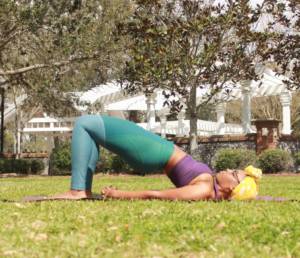 ’Tis the season that reintroduces us to breezy weather, our beloved rooftop brunches with friends and beachside spring break trips. That’s right, spring is right around the corner and given the spring fever some may feel after experiencing a hectic and brutally cold winter, it’s safe to say that spring is usually a happy and hopeful season.
’Tis the season that reintroduces us to breezy weather, our beloved rooftop brunches with friends and beachside spring break trips. That’s right, spring is right around the corner and given the spring fever some may feel after experiencing a hectic and brutally cold winter, it’s safe to say that spring is usually a happy and hopeful season.
But for some people, it can generate opposite feelings thanks to spring allergies, reverse Seasonal Affective Disorder (SAD) and general stressors that we face in our everyday lives.
An estimated 16.2 million adults in the United States had a least one major depressive episode in 2016 according to the National Institute of Mental Health (This means they experienced at least a depressed mood or loss of interest and at least four other symptoms of depression for a period of two weeks or longer). Additionally, women are 40% more likely to develop depression than men.
As someone who has been affected by depression and anxiety, I understand that living with depression can basically make your life so much harder than what it should be. At the time, I didn’t have the ability to seek a therapist and generally had an even more difficult time seeing the positive side in most situations.
As a result of wanting to have an outlet for my feelings of depression and anxiety, I turned to yoga. When I first started my practice, I knew yoga had some amazing benefits but I didn’t know how extensive they were. Once I becamemore consistent with yoga and meditation, my health became balanced and my thoughts started to shift towards a more positive outlook on life. Now four years later of consistently doing yoga, I see all the ways how the practice helped me with my depression and anxiety.
So how does yoga help combat depression and anxiety? This mind-body exercise teaches practitioners to live in the present moment, rather than over-thinking about what happened yesterday or what you have to check off on tomorrow’s to-do list. Yoga forces us to turn our attention inward and control our breathing. Learning to breathe consciously creates calmness in the mind, reduces stress, lowers blood pressure and can enhance one's perception of life.
Below are some poses that can help with releasing stress that may be caused by depression and anxiety. It’s important to note, though, that it helps to be consistent with practicing yoga and breathing in order to help ease stress, develop a healthier mindset and create a sense of wholeness within.
Sukhasana - Easy Pose

This asana calms the brain and brings the focus back to your breath. You cansit in this pose for any length of time but as you continue to practice regularly, alternate the cross of the legs.
Balasana - Child’s Pose

Balasana gently stretches your lower back and hips, bringing calmness to the mind and relaxation to the body.
Virabhadrasana Warrior I Pose

Virabhadrasana fully expands the chest, which allows deep breathing and relieves stiffness in the neck, shoulders and back.
Viparita Virabhadrasana - Reverse Warrior Pose

This powerful pose strengthens, stretches andincreases blood flow throughout the body, which reduces fatigue and anxiety, relieves lower back pain and calms the mind.
Ustrasana - Camel Pose

This heart opener stretches the front of the body- particularly, the chest abdominals and shoulders. Ustrasana energizes the body and reduces fatigue and anxiety.
Sasangasana - Rabbit Pose

Creating an opposite stretch for camel, this asana reminds you to be calm, connect withyour body and become aware of your breath when we find ourselves in uncomfortable situations.
Setu Bandha Sarvangasana - Bridge Pose

This asana stretches the neck, chest, and spine while strengthening and relieving the lower back. It reduces anxiety, fatigue, headache, backache, and insomnia while calming the brain, alleviating stress and depression.
Savasana- Corpse Pose

Savasana rejuvenates, relaxes the body and mind and reduces blood pressure. This asana is a must at the end of each yoga session to reward your body with a much-needed rest after flowing through a variety of asanas.
Tip: Use of props, such as propping your feet on a block and resting your head on a blanket or bolster, can make this an even more rewarding experience.
Taking a few moments out of your day to dedicate time stretching out and flowing with your body does wonders for the immune system, allows you get to know yourself more and improves your mood. While this isn’t a practice once - heal all type of solution to cure your depression, studies show that with consistency, yoga can help reduce feelings of depression.
 Shawna Davis is a wellness journalist and the founder and creator of the wellness lifestyle blog, Flowing and Froing. Beyond the blog, she is a certified yoga instructor, wife, dog mama and is a natural hair enthusiast that’s passionate about health, wellness, and beauty. You can follow her on Instagram @itsshawnadavis.
Shawna Davis is a wellness journalist and the founder and creator of the wellness lifestyle blog, Flowing and Froing. Beyond the blog, she is a certified yoga instructor, wife, dog mama and is a natural hair enthusiast that’s passionate about health, wellness, and beauty. You can follow her on Instagram @itsshawnadavis.








